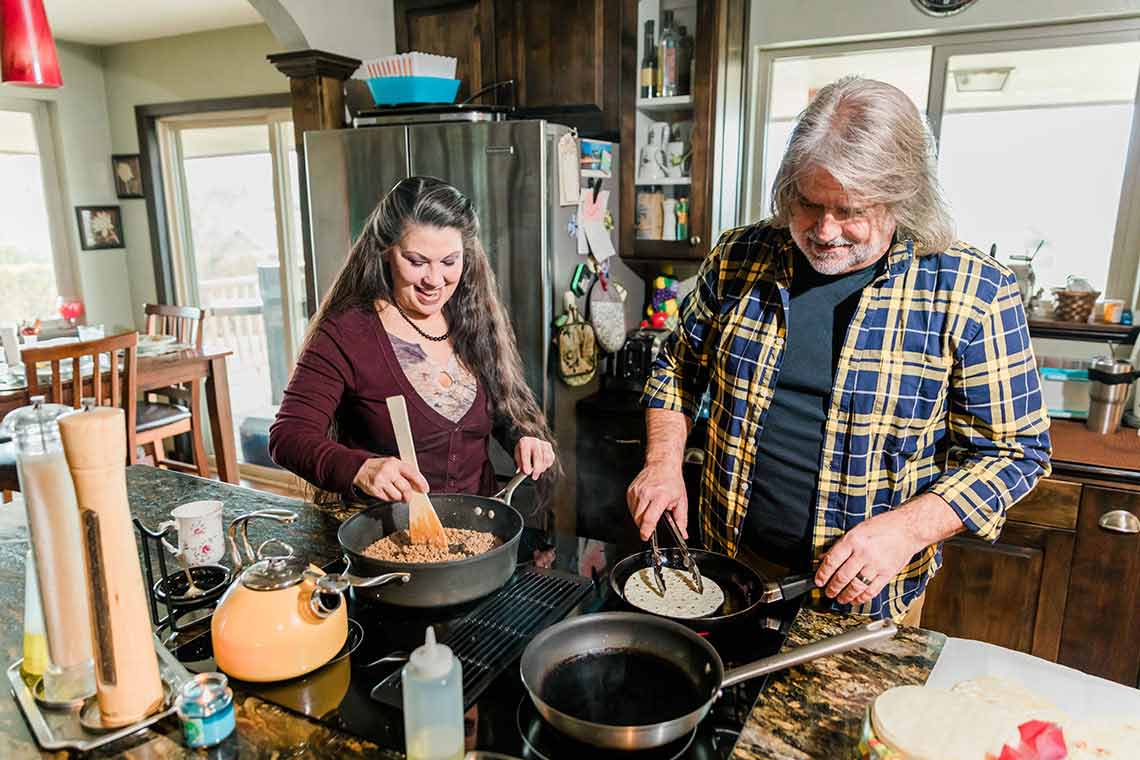
Large expenses happen. Whether it’s college tuition, a new roof, consolidating debts or that dream vacation. Sooner or later, everyone contemplates how they might pay for a big expense. For many Americans, the equity we have in our home – the difference between what we owe on it and what it’s worth – is our biggest asset. But how can we access that wealth if we’re not ready to sell the home?
Two of the most common tools borrowers use to tap into a home’s equity are the cash-out refinance and the home equity line of credit (HELOC). Both can provide the access you’re looking for, but they work quite differently, so it’s important to consider each and match your needs to the product that best suits your situation.
Both types of loan are secured by your home, which means that they typically offer lower interest rates than many other borrowing options. Let’s start by looking at the refinance option.
What is a Cash-out Refinance?
A cash-out refinance replaces your current home loan with a new, larger loan, and allows you to pocket the difference. As an example, say you are looking for $20,000 to put a new roof on your home. If your home is worth $250,000, and you still owe $100,000, that means you have $150,000 in equity. Your cash-out refinance would leave you with $20,000 in cash for the roof, and would replace your $100,000 home loan with one for $120,000. Note that there are typically loan costs associated with refinancing, which you can often opt to roll into the loan amount (or pay directly), so if the refinance costs $1,000 and you wanted to roll that cost into the loan, your new home loan balance would be $121,000.
Key considerations: Cash-out Refinance
- Rates are important! A cash-out refinance completely replaces your old home loan. If rates are lower today, and/or if your credit score is higher now than when you took out your original loan, your refinance could result in a lower interest rate on your home loan.
- Choose your new term. This new home loan will be for a set number of years, just like your old home loan. If you had 27 years left to pay on your original 30-year loan, will you choose to start a new 30-year term? A 25-year term? 20? There are many options, and this is a great opportunity to re-align your loan with your needs.
- A lump sum and a single payment. A cash-out refinance delivers cash to you all at once when you close the loan and keeps things simple with a single home loan payment. This differs from the HELOC option described below.
- It’s a process. The requirements for refinancing are very similar to the process for buying a new home. There will be costs involved, processing time, and documentation requirements that a good lender will strive to keep to a minimum for you.
- Equity required. Most cash-out refinances are capped at an 80% loan-to-value (LTV) ratio at the completion of the loan. In the example above, this means that the loan balance after the cash-out refinance cannot go higher than $200,000, which is 80% of the $250,000 value of the home.
Would the Cash-out Refi work best for you?
Do any of these sound like you? A cash-out refinance may be your best option if:
- Your plans require funding all at once rather than in several parts over time.
- Changing the terms of your current home loan seems like an advantage. Some examples? You might be eager to secure an attractive interest rate, shorten (or lengthen) the loan term, switch from an adjustable to a fixed-rate loan (or vice-versa) or remove private mortgage insurance (PMI) from your loan.
- You have a healthy amount of equity in your home.
- You’re not in a huge rush for the loan proceeds. According to Fannie Mae, most home loan refinances take from one to two months to close (although Solarity routinely does them faster!).
- The rewards of refinancing seem well worth the costs.
Apply For a Cash-Out Refinance
What is a HELOC?
A home equity line of credit (HELOC) is most often a type of second mortgage. Think of it as a second loan sitting on top of your first home loan and occupying some of the space that was previously filled by equity. Taking out a HELOC does not affect your first home loan in any way, so it can be an appealing option if home loan rates have risen and you don’t want to change the lower rate you’re currently enjoying.
In many ways a HELOC works like a credit card that’s secured by your home. You can take out money from this line of credit whenever you want and pay it back all at once or over time. A HELOC is also set up with a borrowing limit just like a credit card. Unlike a credit card, however, a HELOC is established for a set amount of time called a “draw period” that is most often 5 or 10 years, depending on your lender. During that draw period, you’re typically required to make just interest-only payments each month on any outstanding balance. Once the draw period ends, then monthly payments for both principal and interest typically become required unless you make other arrangements with your lender (like refinancing or renewing the draw period).
Key HELOC Considerations:
- It’s an adjustable rate loan. Be prepared for the interest rate (and payment) to rise if that’s the direction the Federal Reserve takes interest rates.
- Often easier to set up. Compared to a cash-out refinance, HELOCs often involve lower up-front costs, less stringent documentation/process requirements, and quicker access to loan proceeds.
- Easy access to funds. Different lenders provide different means of drawing funds from your HELOC. Some issue checks or something much like a debit card. Others may simply allow you to ‘transfer’ funds from your HELOC to checking or savings via online banking. Ask the lender(s) you’re considering about their access options.
- About that payment... If you have a HELOC balance, you will need to make a separate payment for the HELOC on top of your existing home loan payment. That can be a little tricky to budget for, particularly as the payment amount may change as interest rates and/or your outstanding loan balance shift.
- Equity required. Some HELOCs allow you to borrow up to 90% of your loan to value, although 80% or 85% maximums are also common. In the example we’ve been using, a 90% LTV would mean that your primary home loan and new HELOC together could not total more than $225,000 for a home valued at $250,000.
Would a HELOC work for you?
Do any of these sound like you? A HELOC may be your best option if:
- You’re quite happy with the interest rate and other terms of your primary home loan, and don’t want them to change as you tap into the equity in your home.
- You don’t need access to all the loan proceeds at once, or you’re unsure how much you’ll need (and/or when).
- You’d like access to your home equity faster than a refinance process may allow (although Solarity can do either quite quickly!)
- You don’t mind managing two home loan payments, including a variable HELOC payment.
- The idea of flexible access to the equity in your home is appealing.
What's your Solarity story?
We're on a mission to tell the stories of our members and how they are living their best lives. Do you have a Solarity story to share?
